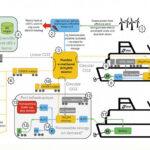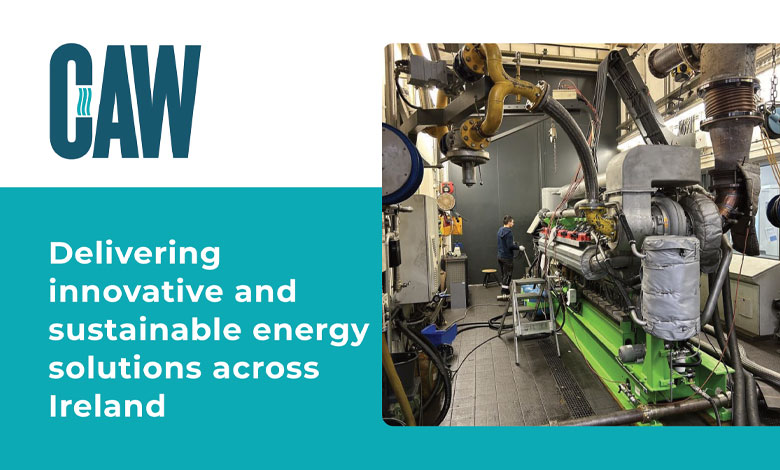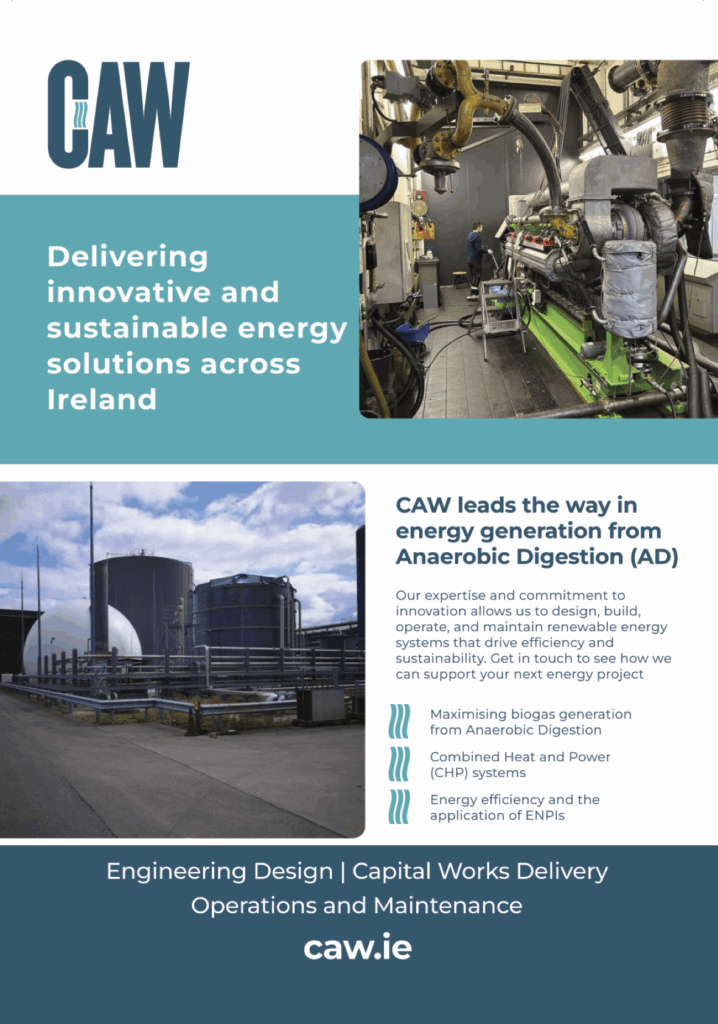
Huawei Ireland FusionSolar: Elevating solar energy solutions
30th May 2025
Maritime Power-to-X: Enabling a scalable green methanol economy
30th May 2025The role of municipal anaerobic digestion plants in meeting the 2030 biomethane targets

As part of Ireland’s commitment to reduce emissions by 51% by 2030, the Government’s Climate Action Plan sets a target of 5.7TWh of biomethane to be generated from Anaerobic Digestion (AD) Plants, primarily Agri-based AD biogas plants. In context and scale this will require the construction of circa 200+ AD Plants over the next five years, each with an average generating capacity of between 25 GWh and 30 GWh.
Whilst much of the current focus is on the development of Agri-based AD plants, the municipal wastewater treatment sector has been successfully utilising AD processes for decades with the primary application being in the treatment of the sludge (biosolids) streams generated from the primary and secondary wastewater treatment process stages. Invariably, the Biogas generated from these municipal AD plants is converted, on site, into electrical and/or thermal energy to offset the energy demands of the wastewater treatment processes. Currently there are circa 16 municipal AD plants located across the island of Ireland generating an estimated 16.5 million Nm3 of biogas annually with an approximate energy content of 100GWh.
The single biggest municipal AD plant in Ireland is located at the Ringsend Wastewater Treatment Works (WwTW) in Dublin. The Ringsend WwTW is operated and maintained by Celtic Anglian Water Ltd (CAW), as part of the ABA Consortium, on behalf of Uisce-Éireann. The AD plant, comprising four 4,500m3 Mesophilic Digestors, treats the primary and secondary sludges generated from the main wastewater treatment processes. The AD treatment stage is preceded by a Thermal Hydrolysis treatment process which subjects the sludge streams to high temperature and pressure. This ruptures microbial cells, solubilises organic matter, breaks down extracellular polymers, enhances biodegradability (resulting in higher biogas yields typically by +15%-20%), improves dewaterability, and reduces sludge volume. In recent times the performance of these digestors has been optimised and enhanced by conversion to Plug Flow Technology increasing the throughput of the digestors and supporting a higher biogas yield, typically between 400 and 420 nm³ of biogas per tonne of dry solids processed.
The Ringsend WwTW Digestors generate approximately 11.5 million Nm3 of biogas annually, with a biomethane content of around 60% (vol/vol), equivalent to approximately 70GWh of energy. The biogas is stored on-site in a gas holder before undergoing pre-treatment to remove corrosive siloxanes and hydrogen sulphide. The treated biogas is then used to fuel combined heat and power (CHP) units and/or two steam boilers at the WwTW. There are currently four CHP units operational at the Ringsend WwTW, each with an electrical output capacity of 1MWe. A fifth CHP unit is currently being commissioned and once operational, the combined electrical output of all five units will be approximately 100 MWh per day – sufficient to meet circa 45% of the WwTW’s electricity demand. Additionally, each CHP unit is fitted with heat recovery steam generators that capture waste heat from exhaust emissions, producing low-grade steam for use in the sludge pre-treatment process. The application of THP ensures that the residual biosolids from the digestion process are pathogen-free and suitable for use as a class A fertiliser in agriculture, further enhancing the environmental benefits of the process.
Elsewhere, other AD plants operated by CAW generate c.1.1 million Nm3 (6.6GWh) of biogas annually from municipal wastewater sludge digestion.
The application of anaerobic digestion to organic-rich feedstocks – whether derived from wastewater sludge or agricultural sources – is a well-established technology with significant potential. Expanding the utilisation of wastewater-derived biogas could complement agri-based AD projects, reducing reliance on fossil fuels and contributing to the circular economy
At CAW we believe that with targeted investment, technological advancements, and policy support, the municipal wastewater sector can significantly contribute to Ireland’s climate action goals. By integrating wastewater-derived biomethane into the broader renewable energy mix, Ireland can move closer to its 2030 emissions reduction target while enhancing sustainability and energy security.
 John G. Devlin
John G. Devlin
Pre-Contract Director
Celtic Anglian Water Ltd
www.caw.ie


